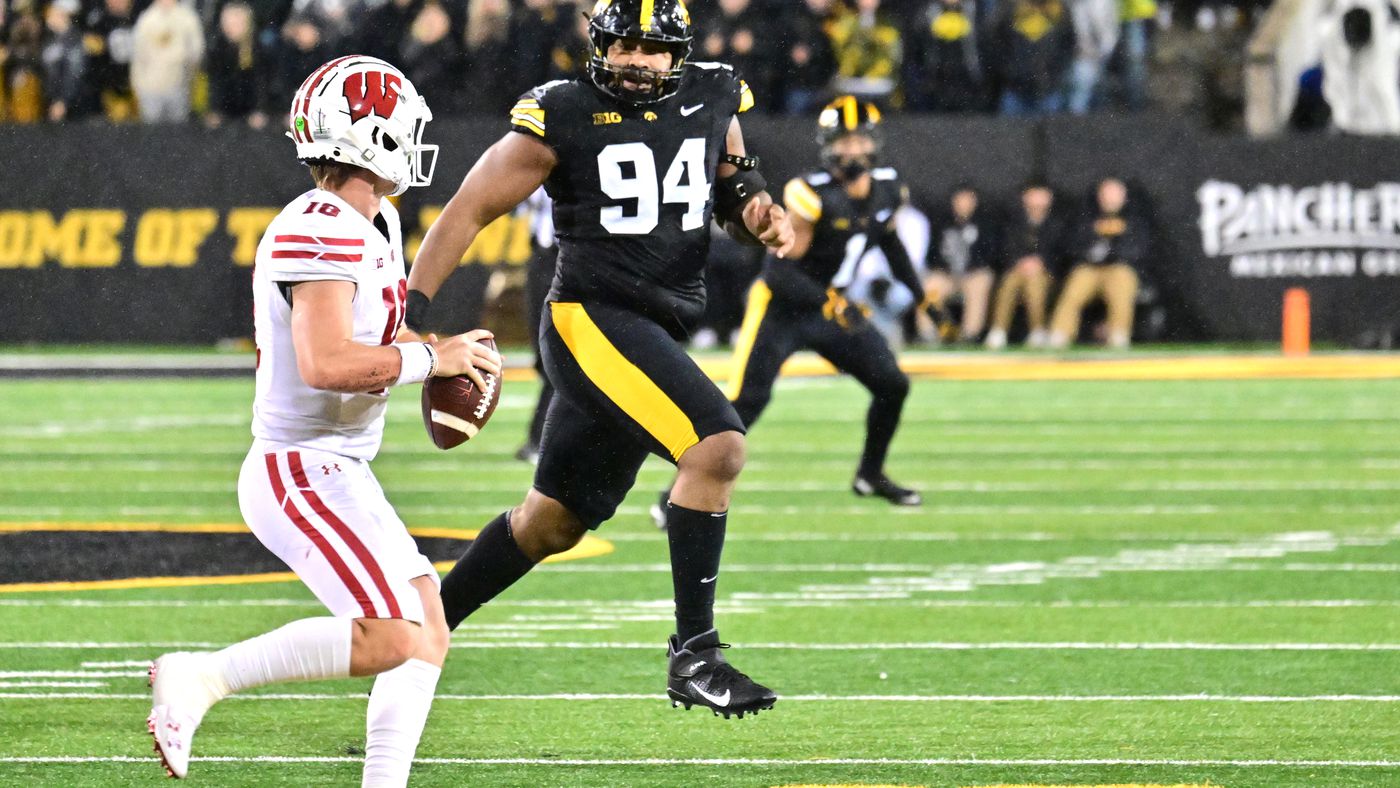College Football’s New Money War: 4 Big Ten Rivals Outspend Wisconsin Badgers in Shocking NIL Power Move That’s Changing Everything
In the ever-evolving world of college football, the landscape is undergoing a seismic transformation—one that is being dictated less by playbooks and more by bank accounts. At the center of this transformation stands the NIL revolution, a phenomenon that has altered the very foundation of how college athletes are recruited, retained, and rewarded. What once was a level playing field driven by tradition, coaching prowess, and program loyalty has now been replaced by a highly competitive market fueled by boosters, collectives, endorsements, and deep-pocketed supporters. Nowhere is this shift more apparent than in the Big Ten Conference, where four of Wisconsin’s fiercest rivals have emerged as some of the biggest spenders in the NIL arms race, leaving the Badgers in a vulnerable position that could define their trajectory for years to come.
The numbers are staggering, and the implications are deeply unsettling for traditionalists who believed that culture and consistency would always win out over cash. While Wisconsin continues to approach the NIL era with caution and a sense of midwestern pragmatism, other Big Ten heavyweights have charged full-speed ahead into the future, pouring millions into their NIL infrastructures and creating financial ecosystems designed to attract the best talent in the country. These schools aren’t just dipping their toes into the NIL waters—they’re cannonballing into the deep end, sending shockwaves throughout the conference and turning recruiting into a high-stakes economic battlefield. For Wisconsin, a proud program with a rich history of player development and tough, blue-collar football, the sudden shift in competitive dynamics represents more than just a challenge. It’s a full-blown identity crisis.
Programs like Michigan, Ohio State, Penn State, and even Nebraska have now surged ahead of Wisconsin in terms of NIL spending, each building war chests that rival professional franchises. What’s particularly jarring is not just the sheer amount of money being spent, but the strategic efficiency with which these schools are deploying their NIL resources. They’re not throwing money around recklessly. They’re using it to build out detailed recruitment campaigns, lock down in-state talent early, and create alluring packages for high-profile transfers who want immediate impact and financial reward. In contrast, Wisconsin’s approach has remained more reserved, more restrained, and some would argue, dangerously outdated in a world that no longer rewards fiscal conservatism.
Ohio State, for example, has embraced NIL with an unapologetic aggression that has reshaped its roster in a matter of months. With a powerful alumni base and corporate sponsorship opportunities in Columbus, the Buckeyes are setting the tone for what a modern college football program can and should look like in the NIL era. They’ve leveraged their brand power to pull in five-star talent from across the country, offering not just a shot at a national title, but a clear and lucrative path to endorsement deals, business partnerships, and long-term financial opportunity. The result is a roster that’s not just built to win now, but built to attract and retain top talent for years to come.
Michigan, long viewed as a sleeping giant in the NIL space, has now awakened with a vengeance. Under the guidance of a well-funded and tightly organized collective, the Wolverines have made massive strides in aligning their football program with the realities of the modern college economy. The program has managed to combine its historical prestige with a newfound business acumen that has vaulted it into the upper echelon of NIL powerhouses. Players are not only being compensated but are also being positioned as national marketing figures with strategic branding opportunities that elevate their profiles beyond the football field. This multi-faceted approach is helping Michigan close the gap with traditional SEC titans while simultaneously widening the gulf between themselves and programs like Wisconsin.
Penn State, too, has made aggressive moves in the NIL space. With a passionate fanbase and robust donor support, the Nittany Lions have created a fertile environment for NIL deals to flourish. Their recent recruiting classes have featured numerous top-tier prospects, many of whom have cited NIL opportunities as a major factor in their decision-making process. By blending legacy appeal with financial incentive, Penn State is effectively rewriting its recruitment script, turning promises of development and tradition into tangible, immediate gains for young athletes and their families.
Perhaps the most surprising player in the NIL explosion is Nebraska. Despite recent on-field struggles, the Cornhuskers have used their vast fan network and loyal booster community to construct one of the most active NIL operations in the country. Nebraska’s collective, bolstered by decades of deep-seated alumni passion, is offering highly competitive packages that rival those of more successful programs. This development underscores a larger point: NIL has decoupled program prestige from performance. Teams no longer need to win championships to attract top talent—they simply need to outspend their competition and offer a better business proposition.
This paradigm shift places Wisconsin in a precarious position. Known for its tradition-rich culture and emphasis on developmental football, the Badgers have long prided themselves on doing more with less. Their ability to turn three-star recruits into All-Americans and NFL Draft picks has been a cornerstone of their identity. But in the NIL era, the rules have changed. Potential recruits are no longer willing to wait three years to earn their shine. They want immediate impact, instant branding, and a clear financial pathway that rewards them today—not tomorrow. Wisconsin’s reluctance to fully embrace NIL as a primary recruiting tool could quickly render it obsolete in the talent acquisition arms race.
While the Wisconsin athletic department has made efforts to ramp up NIL initiatives through partnerships with collectives like YouDub NIL, it’s clear that the Badgers are playing catch-up in a game that’s already well underway. Their current strategy—emphasizing program culture and long-term development—still has merit, but it risks falling flat when other schools are offering six-figure deals and high-visibility marketing opportunities right out of high school. The gap between Wisconsin’s NIL capacity and that of its Big Ten rivals isn’t just financial—it’s philosophical. And in a world where perception often drives reality, the perception that Wisconsin is lagging behind could become a self-fulfilling prophecy.
What makes this development particularly pressing is the looming expansion of the Big Ten. With powerhouses like USC and Oregon entering the fray, the competition for recruits is only going to intensify. These new additions bring West Coast glamor, major-market exposure, and yes, even more NIL firepower. If Wisconsin doesn’t adjust its approach quickly and aggressively, it risks being marginalized in a conference it once routinely dominated. That’s not just a recruiting problem—that’s an existential threat to the program’s long-term success and national relevance.
For fans of the Badgers, the changing landscape brings a mix of anxiety and opportunity. On one hand, the tradition of hard-nosed football, grounded humility, and team-first ethos remains a source of pride. But on the other, the realization that such values may no longer be enough to attract the country’s top talent is beginning to sink in. If Wisconsin wants to remain competitive in a Big Ten where money now talks louder than trophies, it must evolve its NIL strategy—not incrementally, but dramatically. That means ramping up donor engagement, forging corporate partnerships, and investing in the marketing infrastructure needed to support athletes on and off the field.
Ultimately, NIL is not just a recruiting tool—it’s a reflection of a program’s ambition. And right now, the most ambitious programs in the Big Ten are the ones outspending and outmaneuvering the rest. For Wisconsin, the challenge is clear: adapt to the new game or get left behind. The clock is ticking, the stakes are rising, and the next generation of stars is already watching—closely.


